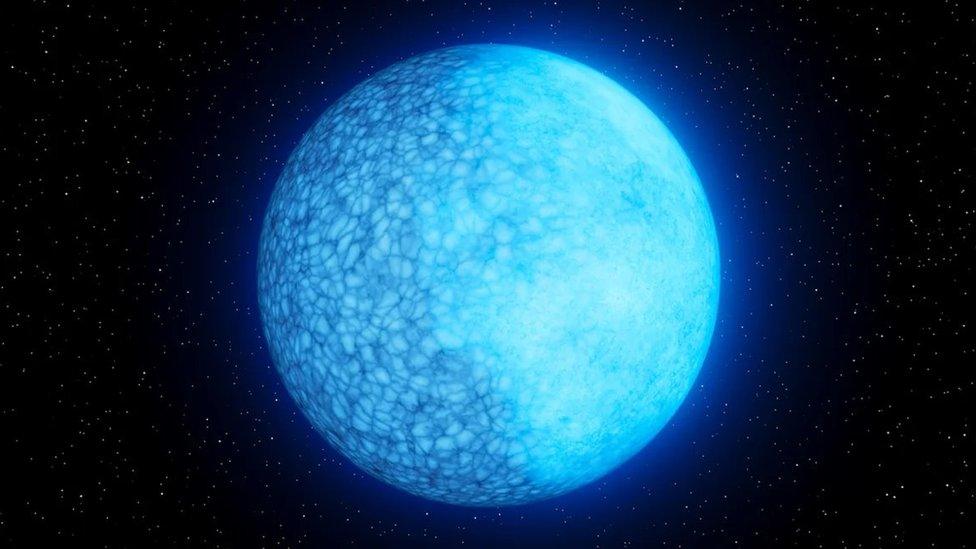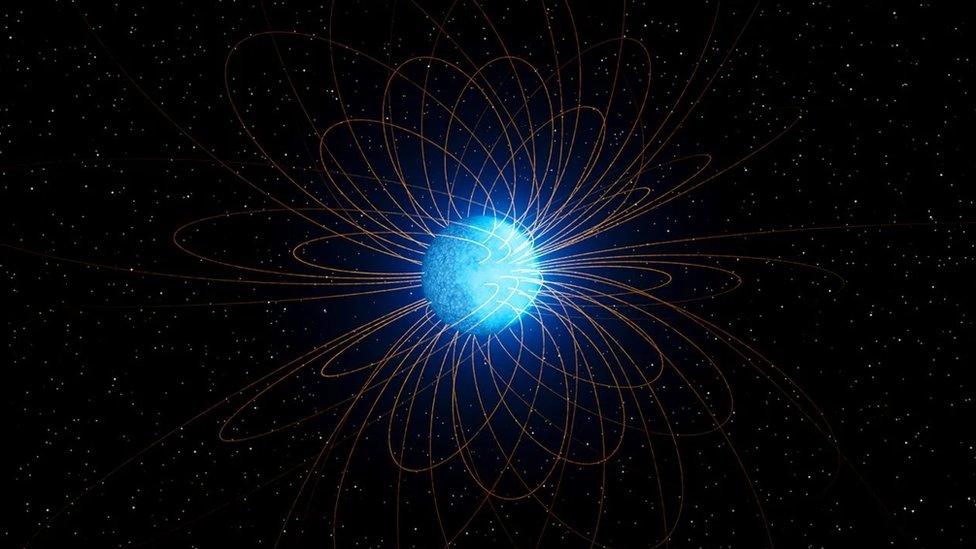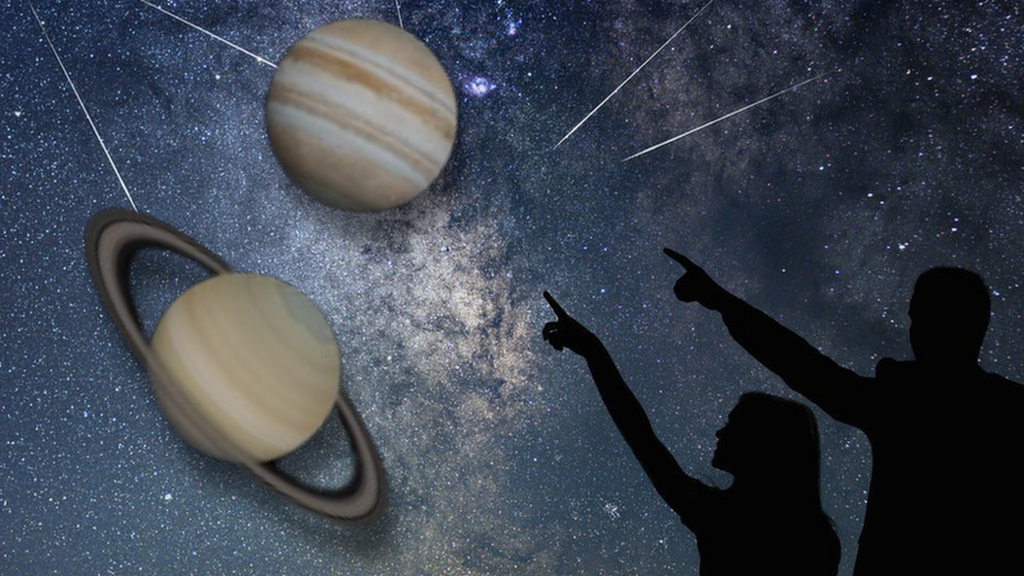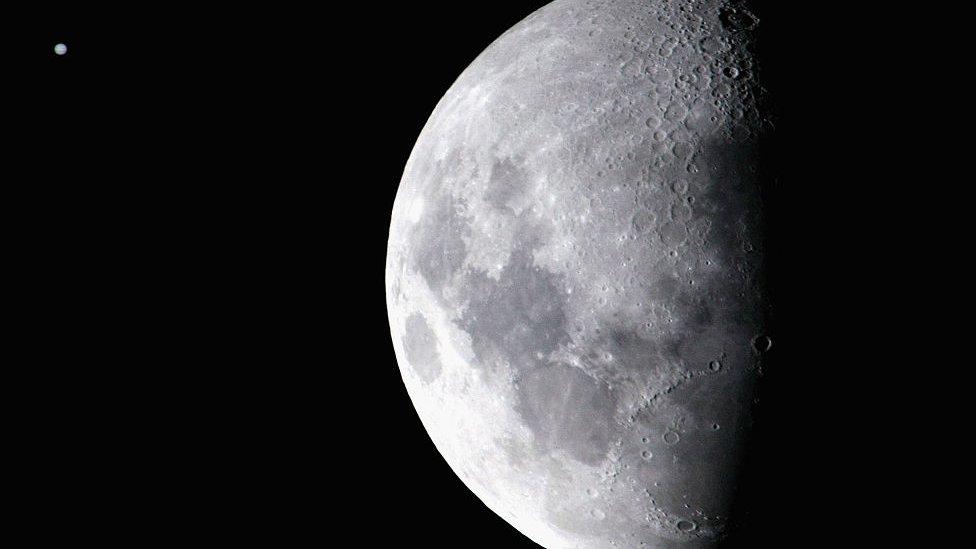Janus star: The white dwarf with two faces
- Published
- comments

An illustration shows what the white dwarf star looks like, including its blue-tint
You might have always been told being two-faced was a bad thing - but that's certainly not the case for this star.
Astronomers made the first-of-its-kind discovery, after finding a white dwarf with two completely different faces.
One 'face' is made of hydrogen and the other of helium, according to the study which has set out the findings in the journal, Nature.
What is a white dwarf?
A white dwarf is the burnt remains of a dead star - something our Sun will become in around six billion years' time.
When a star dies gravity means that heavier elements move toward the centre while lighter elements like hydrogen or helium rise to the outer layer.
At their hottest the stars will have hydrogen atmospheres, but as the stars cool over time, they tend to have helium atmospheres.
But typical white dwarf don't have one side of the star devoted to one element, and the other dominated by another.
Why does the Janus star have two faces?
An illustration shows a blue-tinted white dwarf star. Once like the Sun this star has died and now has an unusual atmosphere filled with helium on one side and hydrogen on the other brighter side.
"The surface of the white dwarf completely changes from one side to the other," said lead study author Ilaria Caiazzo, a postdoctoral scholar research associate in astronomy at the California Institute of Technology.
"When I show the observations to people, they are blown away.
How did they find the Janus star?
The unusual star was first detected by the Zwicky Transient Facility, at Caltech's Palomar Observatory in California in the United States.
Caiazzo was scanning the skies each night as part of a survey of white dwarfs, when an object appeared that rapidly changed in brightness.
She set out to investigate this strange sight more using equipment from Palomar's observatory, from Gran Telescopio Canarias in Spain's Canary Islands and the W.M. Keck Observatory in Hawaii.
The three observatories showed that Janus was rotating on its axis every 15 minutes — and showcased the star's double-faced nature and composition.
Why has the dwarf star got two faces?

Some experts think the reason for the stars two faces might be due to its magnetic field affecting how helium and hydrogen are distributed
The researchers aren't quite sure why the star has two completely different sides, but are studying various theories that might explain it, such as magnetism or the star still in the process of evolving.
Watch this space for more!
- Published16 June 2023

- Published4 January 2023

- Published14 August 2022

